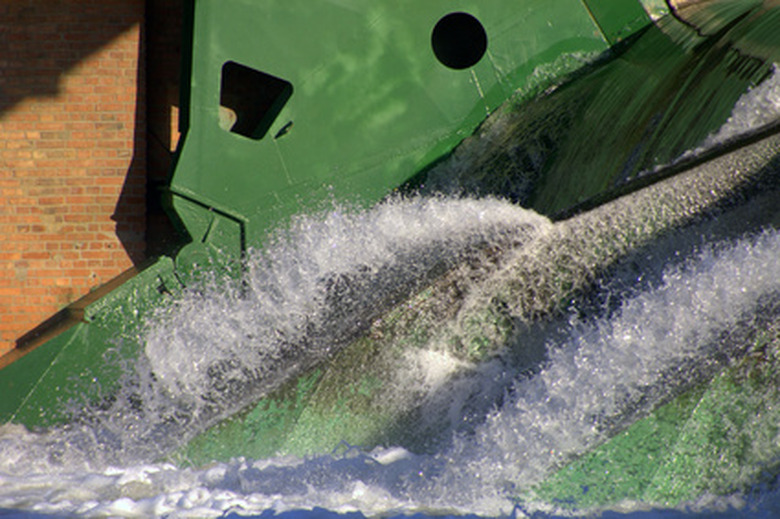How To Build A Dam Craft With Popsicle Sticks
Building a dam craft with popsicle sticks fits easily into studies on water power, energy sources and electricity, and ecosystems. Many children will enjoy the hands-on building experience. Project-based learning brings out the innate creativity of young minds and harnesses the energy of active learners, giving them the best chance to showcase their knowledge and understanding. Through the research, construction and testing process, children have the opportunity to learn about types of dams, the forces and structural integrity of dams, how dams generate electricity and the environmental impact of dams.
Research and Building
Step 1
Research types of dams, construction tips, forces that affect dams, problems facing dam engineers and how shape affects the strength of a structure. Check your local library for books on dams and dam construction . PBS' Building Big has a useful resource page on dams as well.
Step 2
Draw a diagram of a popsicle stick dam that will best withstand the flow of water.
Step 3
Place the container on a solid surface. Pour the dirt or sand into your container until it is half full. Use the spoon to contour the landscape and cut a path for the river that runs the entire length of the container.
Step 4
Fill the river bottom with a thin layer of gravel.
Step 5
Choose a point in the river to place a dam and decide what type of dam would work best at that location. Compare that design with your dam drawing and make modifications to the design, if necessary.
Step 6
Construct the dam according to your design using popsicle sticks, gravel, dirt or sand, tape, string and glue. Cut the popsicle sticks into any shape or size as needed. Create a sluice gate to start and stop the flow of water as needed. Decorate the landscape, if desired, by placing toy fish, trees, bushes, and animals on the land and in the river.
Testing
Step 1
Close the dam gate to prevent the flow of water through the dam and fill the bucket with water.
Step 2
Slightly elevate one end and slowly pour the water into the river channel until it flows down to the dam.
Step 3
Open the gate and watch the water flow through the dam. Continue adding water, opening and closing the sluice gate to test its capacity to control water flow.
Step 4
If you are not satisfied with the function of your dam, identify the weakness and redesign the dam and sluice gate. Siphon the water from the container with the baster and install the new dam in the river.
Step 5
Repeat testing steps 1-4, to determine whether you have solved the problem, until you are satisfied with the results.
Things Needed
- Research materials
- Paper and pencil
- Long, shallow metal or plastic container
- 10-50 lb. Bag of clean sand or dirt
- 5-25 lb. Bag of aquarium gravel, pebbles, or river rock
- 50-1000 Popsicle sticks
- Sticky craft glue
- Duct tape or electrical tape
- String, twine or yarn
- Scissors
- Plastic bucket
- Large spoon
- Baster
- Water
TL;DR (Too Long; Didn't Read)
If possible, this project works well outside or in a garage or rec room on a large sturdy table. If done outside, a garden hose can replace the bucket as the water source.
Those who live near beaches or quarries may be able to obtain sand and rock at low cost or free. Check local regulations and contact the local parks department or fish and wildlife service or the owners of the land for permission and cost details.
Cite This Article
MLA
Hooser, Tamara Christine Van. "How To Build A Dam Craft With Popsicle Sticks" sciencing.com, https://www.sciencing.com/build-dam-craft-popsicle-sticks-6819380/. 24 April 2017.
APA
Hooser, Tamara Christine Van. (2017, April 24). How To Build A Dam Craft With Popsicle Sticks. sciencing.com. Retrieved from https://www.sciencing.com/build-dam-craft-popsicle-sticks-6819380/
Chicago
Hooser, Tamara Christine Van. How To Build A Dam Craft With Popsicle Sticks last modified August 30, 2022. https://www.sciencing.com/build-dam-craft-popsicle-sticks-6819380/
